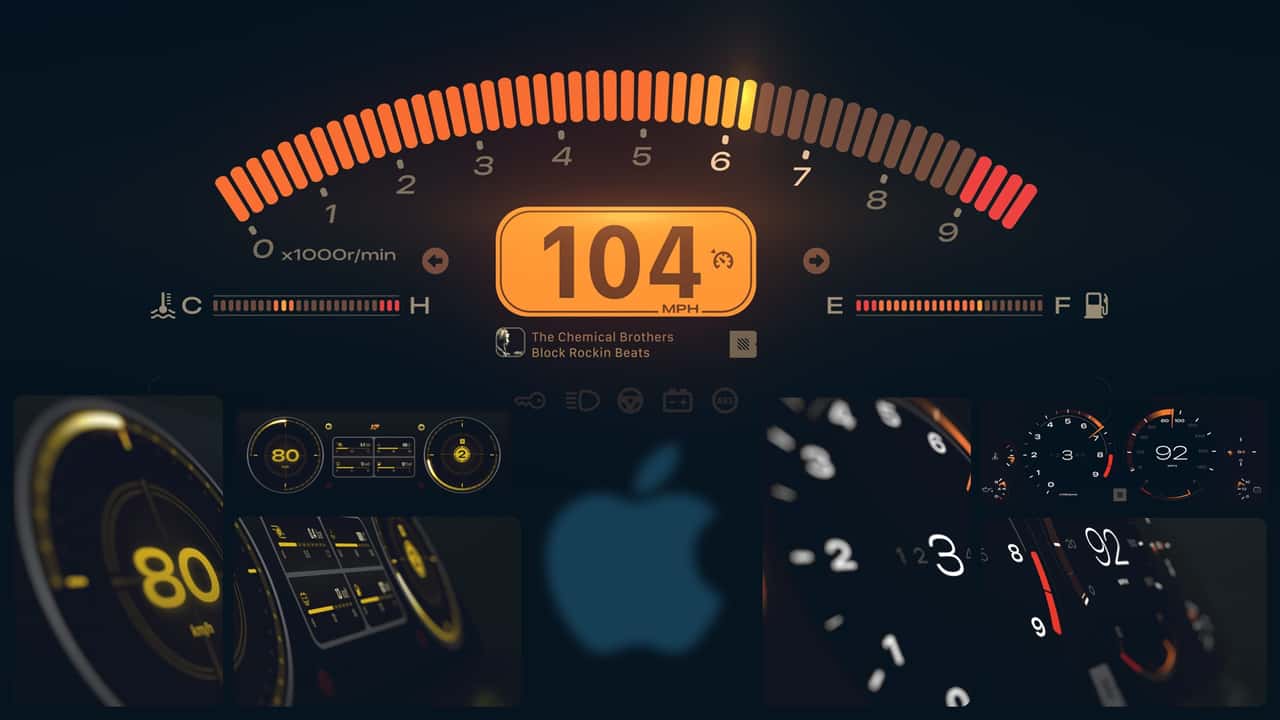Apple is promising a lot with its next-generation of CarPlay. In fact, the entire idea is that the automaker hands over the ability for CarPlay to mirror itself on every display and read the output of just about every sensor to become the entire user experience of the automobile.
All of that integration seems like a no-brainer to CarPlay lovers. Not only do drivers get a consistent interface across vehicles, but their most crucial daily organizer, their iPhone, becomes the car’s centerpiece.
Now, imagine a bit further and think of the potential for customization—as The Verge asks, could next-gen CarPlay allow automakers and drivers to mimic the look and feel of beloved classics in their modern car’s cabin?
Get Fully Charged
Apple’s Next-Gen CarPlay
So many people use CarPlay in their cars today. It helps to mesh phone-centric society’s tie to their mobiles with one of the most important machines in their life: their cars. Apple’s next-generation CarPlay will allow the phone to tap into data from the car’s real-world sensors and use the read-only information to build entire gauge clusters using Apple’s framework—so as long as OEMs are on board.
BlackBox Infinite thinks so. The design firm has been working with the recently put together a case study on Apple’s new CarPlay framework to see how reimagined gauges of the pre-screen era could look in a brand-new car. A true test of the Human-Machine Interface that next-gen CarPlay brings to the table.
Check out the behind-the-scenes video below:
The team at BlackBox said the goal was to stretch the framework as far as they could, incorporating classic clusters imagined from the Porsche 911 930 Turbo, Acura NSX, Ferrari Testarossa, Lancia Delta Integrale, Honda S2000, DeLorean, and C4 Chevrolet Corvette. And as seen in the video, the firm did an amazing job at reverse engineering the original design language and incorporating it into a contemporary space that is uniquely Apple.
Now, sure, automakers could do this themselves if they really wanted to. Ford already has done this in the new Mustang, allowing owners to relive the classic Fox Body-style gauges at the press of a button. Ford’s solution is all in-car software, though.
Other automakers like GM and Mercedes-Benz have sworn off the full capabilities of next-generation CarPlay, so the potential for customization in those marques is out for now.
But how much will Apple allow for customization of the new CarPlay framework? Apple is pretty strict about the level of customization that it allows in its products. For years, owners of iPhones couldn’t display widgets or move icons wherever they wanted, and the Apple Watch still doesn’t allow owners to create custom watch faces. So why would the electronics giant allow for custom gauge faces?
The team here at InsideEVs discussed the possibilities and are on board with the potential that Blackbox introduced here. Heck, we even agreed that this would be the perfect time for automakers or app creators to monetize something specific to CarPlay—and enthusiasts would absolutely love it.
As much as we’d love to see it happen, the future of this concept remains to be seen.
In recent years, Apple has established itself as a dominant player in the automotive industry with its widely adopted CarPlay system. This innovative technology allows users to seamlessly integrate their iPhone with their vehicle, providing access to a range of features such as navigation, music, and hands-free calling. Now, rumors suggest that Apple is set to revolutionize the automotive sector once again with its next-generation CarPlay system, which could reimagine the gauge clusters of classic enthusiast cars.
One of the key features of Apple’s next-gen CarPlay is expected to be the integration of a fully digital gauge cluster. This would enable drivers to customize their dashboard display, choosing from a range of different styles and configurations to suit their preferences. This could be particularly exciting for owners of classic enthusiast cars, who often value the traditional look and feel of analog gauges but still crave the convenience and functionality of digital displays.
By leveraging advanced graphics and user interface design, Apple’s next-gen CarPlay could offer a seamless blend of classic aesthetics and modern technology, providing drivers with the best of both worlds. Imagine the ability to switch between a vintage-inspired gauge cluster with retro fonts and colors, and a more contemporary layout with sleek, minimalist graphics – all at the touch of a button.
Furthermore, Apple’s next-gen CarPlay could also integrate seamlessly with the vehicle’s existing systems, such as performance data and diagnostics. This could allow drivers to access real-time information about their car’s engine performance, fuel efficiency, and more, all displayed in a user-friendly and visually appealing manner.
For classic car enthusiasts, this new iteration of CarPlay could open up a world of possibilities for customization and personalization, enabling them to enhance their driving experience while still preserving the unique character and charm of their vintage vehicle.
While details about Apple’s next-gen CarPlay remain somewhat speculative at this stage, the potential for innovation and creativity in reimagining gauge clusters of classic enthusiast cars is certainly exciting. As technology continues to evolve and expand its reach into the automotive sector, it is clear that Apple is leading the way in transforming the driving experience for enthusiasts and casual drivers alike.

